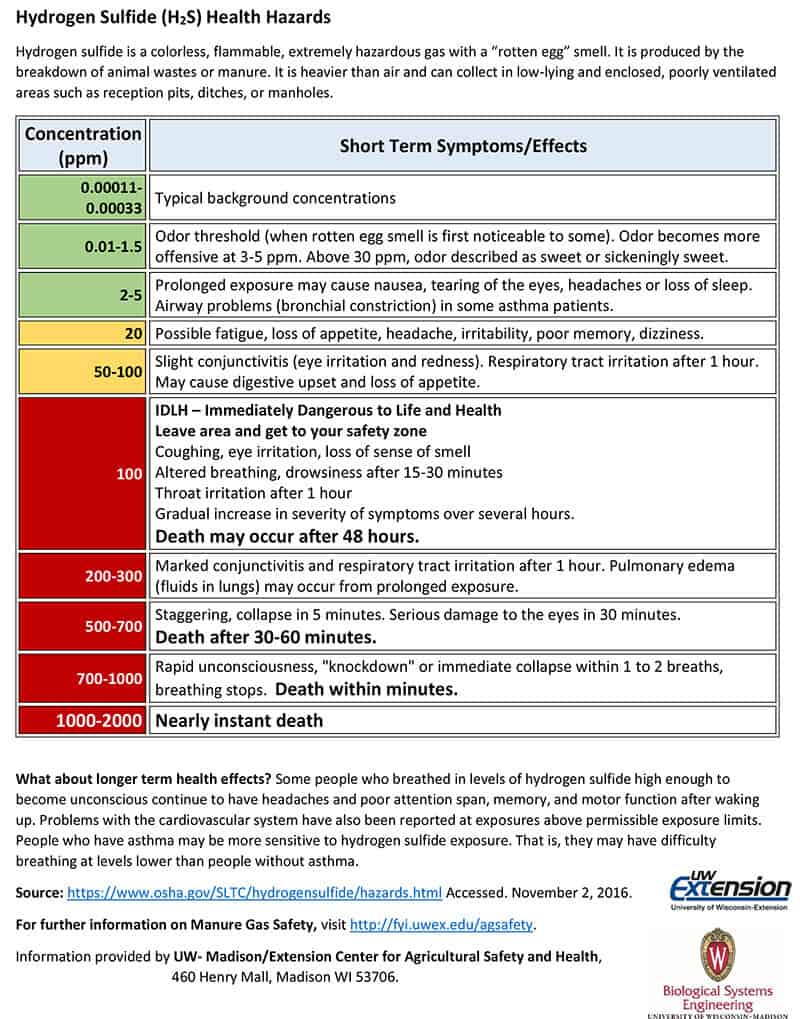At Your Home or Place of Business
“Why testing for and eliminating
this poisonous/flammable gas matters”
Following is a short summary and video on the set up and testing for a typical “Smoke Test” that aids in locating existing – sometimes elusive Sewer Gas Leaks in a home or business. Most of these “rotten egg” smells can easily be found emanating from dried out traps in seldom used fixtures or floor drains. Others are more difficult to find; thus smoke testing can aid in locating old or unknown floor drains, hidden crack’s, joint separation or blockages in plumbing drain/vent piping as well as defective toilet wax seals.
What is the definition of sewer gas, its components and possible symptoms of low/high level exposure? According to OSHA’S Fact Sheet the main component in sewer gas is Hydrogen Sulfide (H2S) – other gases that may be present are Ammonia, Methane, Carbon Monoxide, Carbon Dioxide, Sulfur Dioxide, and Nitrogen Oxides. Hydrogen sulfide in heavy concentrations is extremely hazardous and flammable and gives off a characteristic “rotten egg” odor. These toxic and non-toxic gases are produced by a natural breakdown of bacteria and organic materials from human/animal and industrial waste (e.g. sewage). Sewer gases can also harbor bacteria, pathogens and certain viruses such as Rotavirus, Norwalk virus, Adenovirus and possibly the Coronavirus (IAPMO.org). The predominant gas Hydrogen Sulfide is heavier than air and has a low odor threshold of just 1 part per billion. When those odor concentrations rise to 1-3 parts per million (ppm) people start investigating the source. What can be alarming about this gas is that continuous low-level exposure as well as during high-level exposure concentrations can cause a person to lose his/her ability to smell the gas even though it is still present. Low concentrations and prolonged exposure of 2-10 ppm can irritate the eyes, cause headaches or loss of sleep, as well as affect throat and respiratory systems (burning, tearing, of eyes, cough, shortness of breath). Higher concentrations of 20-50 ppm can lead to worsened respiratory symptoms including difficulty breathing, headaches, dizziness and nausea.
Berner Plumbing performed the following video smoke test on their ½ bath office and found no “open faults” meaning the plumbing is correctly installed and functioning properly. The individual traps (sink and toilet) all have a protective water seal, no cracks in drain/vent piping and the toilet wax seal was proven airtight. This smoke test uses a non-toxic smoke to locate faults in home or office plumbing and at this location, the smoke was introduced at the basement level clean-out pipe and it slowly flowed through the plumbing pipe drain/vent system and exited up through the 3” roof termination. The test was successful – meaning no smoke leaks were revealed.
In conclusion, sewer gas can present itself both on new and old properties alike. Also, seasonal seldom used or vacant properties are more prone to sewer gas exposure. For additional information on diagnosis and testing for sewer odor gas leaks or for peace of mind on testing the integrity of your home/office plumbing system, call Berner Plumbing & H20 Inc. at 888-838-9596 or email us at Help@bernerplumbing.com.




